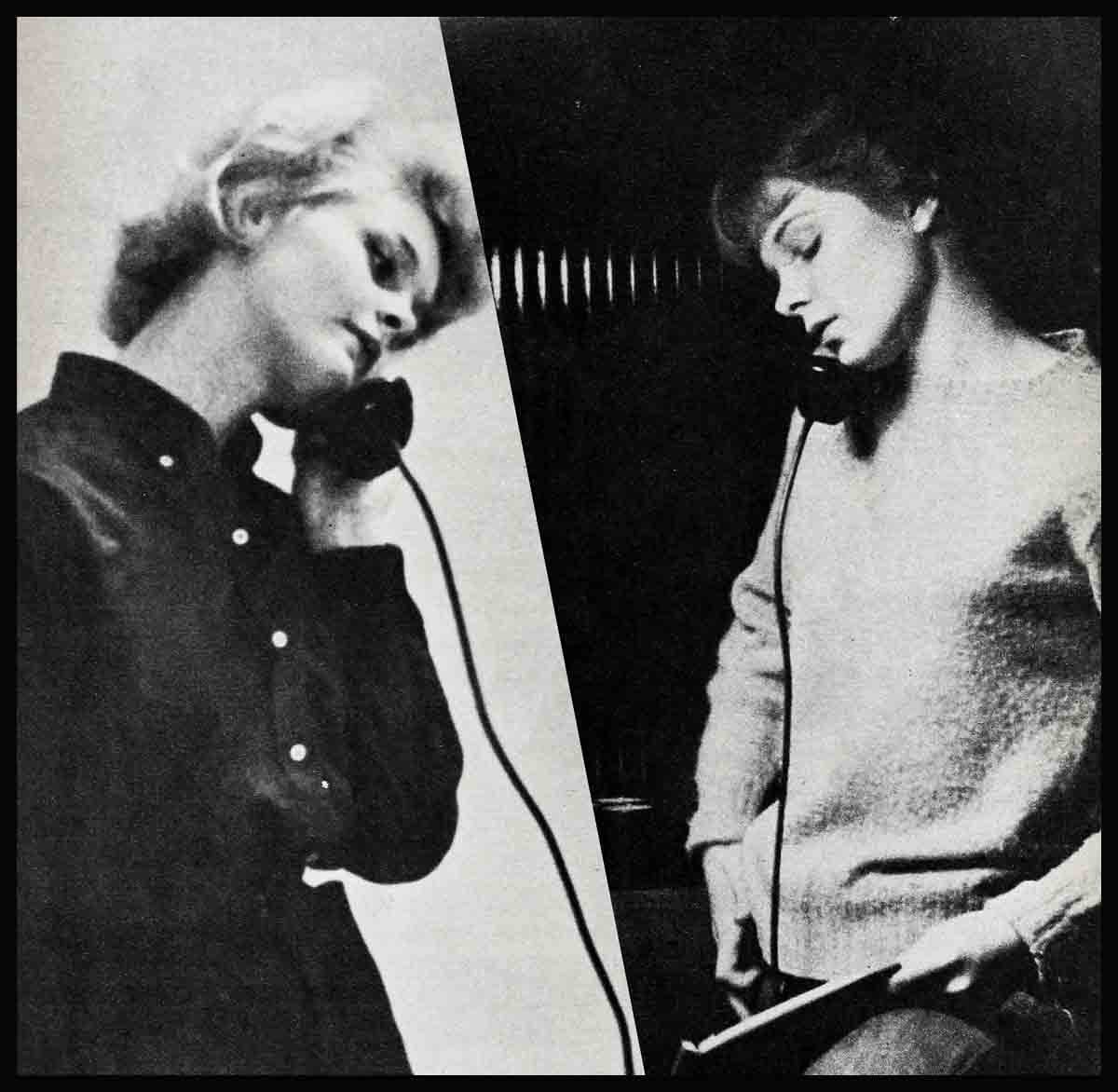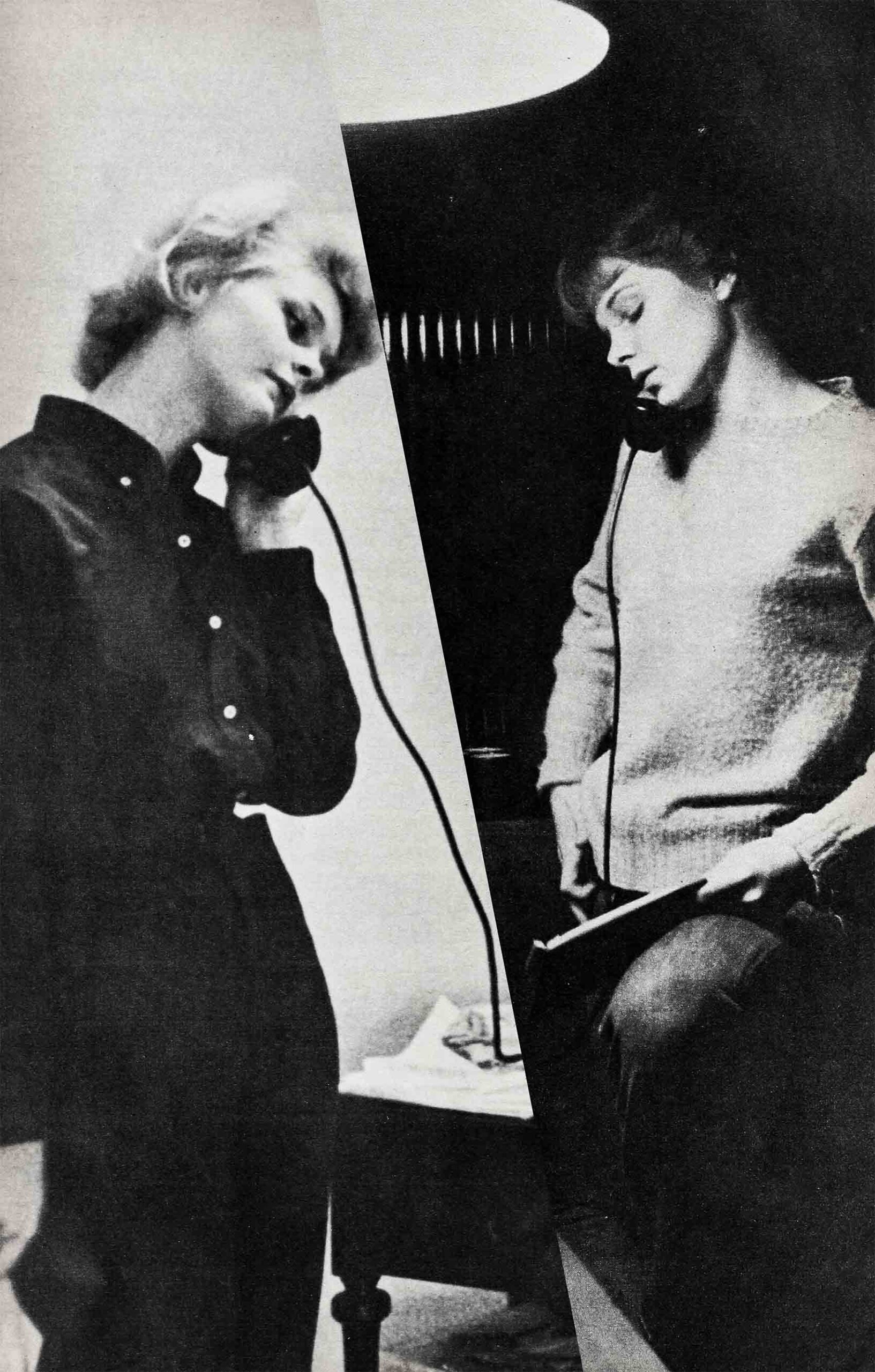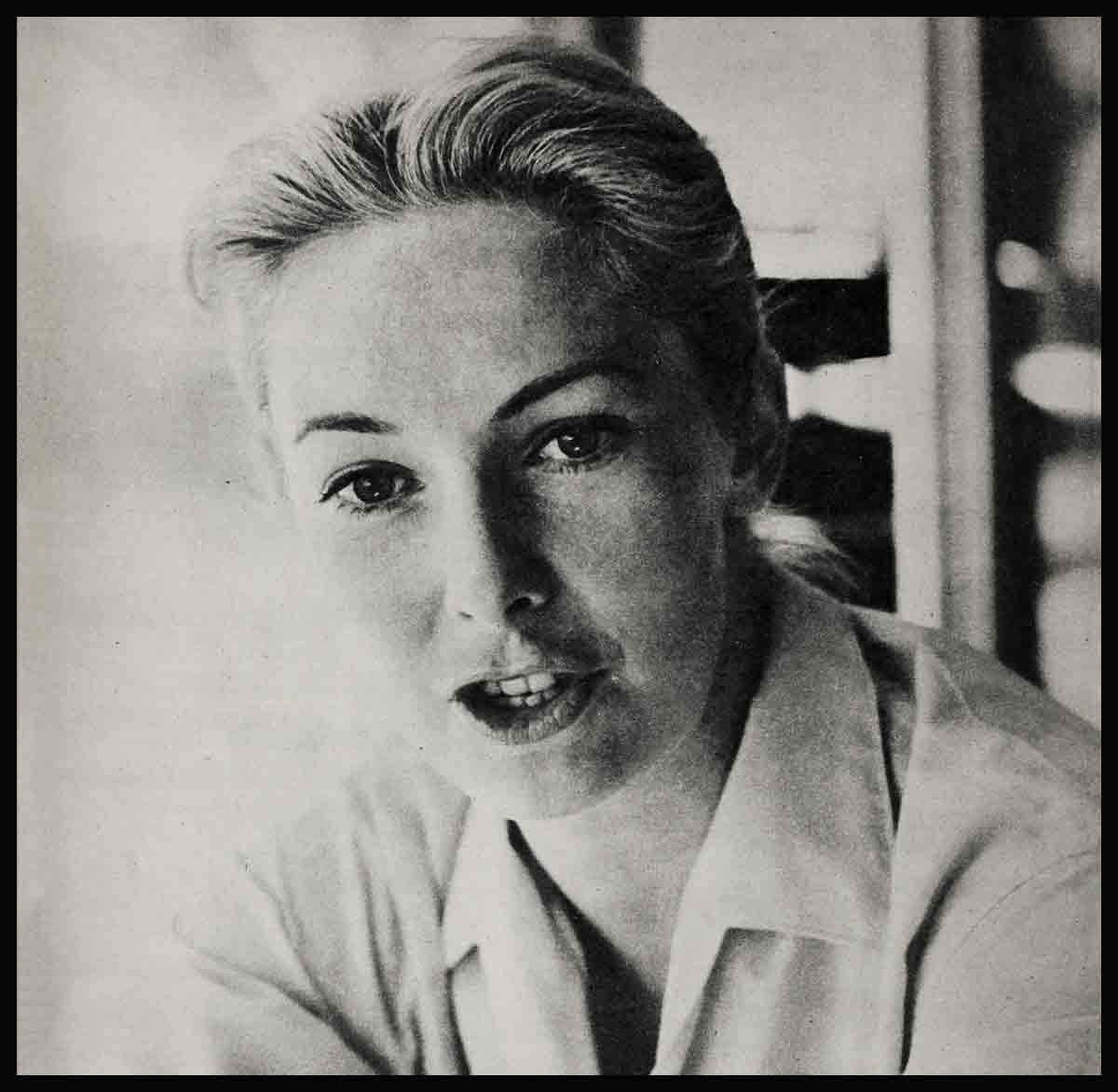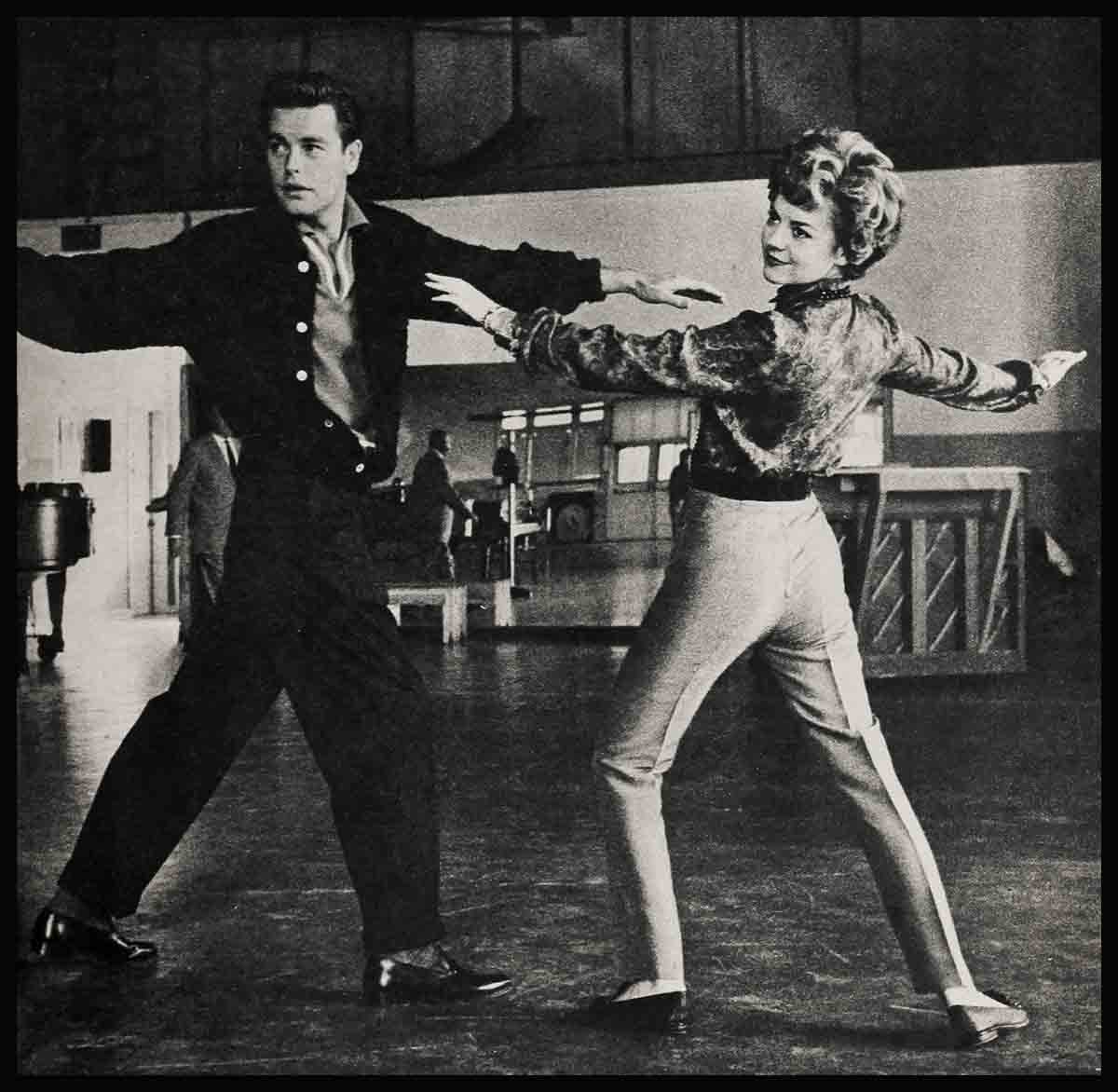
It’s Happening Again . . . Can A Jinx Strike Twice?
IT ALL BEGAN on a hot, humid August day nearly three years ago, when a frail young girl, with her two-year-old son, boarded an East-bound train. The place, Union Terminal in downtown Los Angeles. The pale, gaunt figure wore only a smudge of makeup, her blond hair was stringy and awry, her face showed signs of extreme fatigue, her shoulders drooped under the weight of the child, sleeping in her arms.
THERE WAS NO ONE HAND to see them off. In her purse were two tickets, oneway fares to Bennington, Vermont, a place that was strange to her, just as the town and the life she was leaving had been strange. It was no brief holiday she was setting out on, no cross-country trip to visit relatives and friends. Her motivation was strictly to get away, away she hoped to a new world and a new life. Her decision to leave wasn’t made in haste. She had thought it through.
THE TRAIN JOLTED as the engine made its first surge forward, then the sleek, silver streamliner eased smoothly over the glimmering rails ahead. Soon, it had left the station, then the city limits far behind. Not once did the girl look out the window to catch a final glimpse of the city. For to Diane Varsi, her dreams had been shattered and her only salvation was to look ahead to a new life . . . to “finding herself” . . . to being a good mother to her young son Shawn.
ONLY A YEAR BEFORE, it had all been so different. She had arrived in Hollywood an unknown young girl and rapidly found herself a star. She discovered a new way of life. It was exciting at first, demanding at times, but almost always fun. She would walk into the studio commissary, unable to believe she really belonged there with the Lana Turners and the Marlon Brandos. To start with, 20th Century-Fox had signed her to a contact at two hundred dollars a week. To Diane, who till then had known only bleak poverty, it seemed like all the money in the world. For the first time in her life, happiness seemed within her reach. She learned to smile again, even to laugh. The first time someone asked for her autograph . . . the day she was assigned a dressing room with her name on the door . . . it was all beyond anything she had dared to dream. Those were days of happiness for Diane. That happiness wouldn’t be hers for long, but how could she know that then?
Diane Varsi had come to Hollywood from a tragic background. And as if to forget her dark past, she refused to talk about it. She kept it a mystery, and Hollywood knew only bits and pieces of her life story. The unhappy childhood . . . the teenage marriage to escape it . . . the quick divorce . . . the child who had never seen his father. When she arrived in Hollywood, she was penniless. She had an infant to care for, and she was an unknown. But she had determination, and miraculously, she became a star. She even fell in love again, with James Dickson, and they were quietly married.
For the first time in her life, she looked forward to the future, and could forget the past. She put her whole heart into her work. No one who saw her then can ever forget that special glow she had. No one who saw her then could have imagined how quickly the shadows would close in.
She never quite got over her shyness, and she was never a mixer. But she enjoyed the glamour and excitement of studio life, even if she didn’t become a major part of it. She and her husband leased a small home in Topanga Canyon, near Malibu Beach. She was pleased with her career, and happy to be Mrs. James Dickson.
The change began
Then one fall day in 1957 she signed to play the biggest role in her career—the part of Allison MacKenzie in “Peyton Place.” And on that day, her life began to change.
When she began the role, Diane Varsi had everything. When it was over, she had almost nothing left. But there was no sign, no hint, no way for her to know what was to happen. Her son Shawn was thriving in the good Malibu air. Her marriage was a contented one. Her career glittered before her, full of promise.
Diane read “Peyton Place,” and then she read the movie script. She liked this girl Allison. And during those first few days of shooting she was friendly and talkative. She chatted freely with Hope Lange, Russ Tamblyn and the other young players in the cast.
Then, without warning, it happened. An unseen force seemed to take over. Diane withdrew completely. She was no longer the same girl. When she wasn’t performing, she would disappear. She would sit behind closed doors in her dressing room. She even avoided eating with the others in the studio commissary. She would bring her own lunch and eat it alone in her dressing room. Some said she began to talk to herself in there; others explained she was reading poetry aloud.
She had never talked too freely at interviews. but she had always been cooperative and friendly. Now this changed, too. At first, she refused to see only certain newspaper people. Then she shied away from giving any interviews at all. If, finally. she consented to an interview, she would sit there close-mouthed, refusing to talk about herself, refusing to talk about anything at all, except possibly poetry.
The old Diane Varsi seemed to disappear. The part of Allison absorbed her more and more. Each day she withdrew deeper into her shell. By the time the company went to New England to shoot scenes on location, her behavior was too strange for anyone to ignore. It was obvious that she was deliberately avoiding people. She took long walks alone in the country. When she returned, she’d go straight up to her room, even though it was still early.
Day by day, the changes were subtle. But when she returned to Hollywood, people who hadn’t seen her for a while were shocked. She looked so different. She’d begun to neglect her appearance. She’d always been slender, but now she had lost so much weight that her clothes hung on her. She gave up pretty, feminine clothes and wore blue jeans and a white shirt to the studio.
Her face broke out in a rash. It looked like the kind caused by nerves. On the screen, makeup hid the rash, and, as Allison, she was beautiful. But old friends, meeting her on the street, were stunned at her appearance.
Her old doubts and fears came back, too. She became painfully self-critical. “I can’t act,” she told a friend, desperately. “I don’t want to act.” Yet acting had been what she wanted most in the world.
She seemed near the breaking point. The life she had built was crumbling down around her head. Her marriage, too, fell apart. In the summer of 1958, she was divorced. Diane and her little boy were alone in the world again.
“Peyton Place” was finished now. Allison was a triumph, but Diane was lost.
As soon as she could get away, she ran. She boarded a train for Bennington, Vermont, with the one thing she had left—her son.
A week passed, months, then a year.
Friends wrote long letters to her, asking her to come back. Some made the trip to Vermont to see her. Producer Jerry Wald called her from Hollywood regularly. Her answer was always the same. No.

Another came . . .
Not long after, another young girl with short blond hair came to Hollywood. She, too, was still in her teens—sweet, a little shy, with offbeat ways. She liked black stockings and flats, loose-fitting sweaters and full skirts. She could be rebellious, in a quiet way, if she was asked to do something she thought was silly. She was sensitive, and she had a child-like faith in what happened on a movie screen. “I don’t go to movies that are shocking.” she said. “Even ‘The Wizard of Oz’ frightens me to this day. I saw it once when I was a child and ran out of the theater, screaming in terror when the scene where the ugly green monkey-bats came on. And I remember seeing ‘Bambi.’ When Bambi’s mother died, I became so hysterical with grief that I had to leave.”
Something about this girl made people want to protect her, just as they had wanted to protect Diane. In many ways, she reminded people of Diane.
Jerry Wald was getting ready to film the sequel to “Peyton Place.” Diane had been nominated for an Oscar for her portrayal of Allison, and he wanted her to play the role again. He called Bennington, but her answer hadn’t changed. He waited, hoping she would change her mind. But then there were only two weeks left before the first day of shooting, and he had to choose a new Allison. He chose the girl who had reminded so many others of Diane.
And suddenly it was all happening again. Again, in the same strange way, the role of Allison seemed to take over. The young girl became almost a recluse. When the other actors stood around the set, drinking coffee and talking, she never joined them. Instead, she went alone to her dressing room. The room was a clutter of magazines, and each day she would bring a heap of new ones—not just to skim through idly, but to read every word.
The young girl was engaged to be married, but once the picture began she seemed strangely unexcited. She refused to talk about the marriage. She confided in no one.
Then, one day, she walked off the set. She disappeared. For an entire weekend she was missing. No one saw her, no one knew where she had gone.
At 8 A.M. on Monday, she calmly walked back onto the set. She was on time to become Allison again.
Finally, she admitted she had flown to New York to see her fiance and had almost been stranded there. A snowstorm had closed the New York airport just after her plane took off for Hollywood.
She stood her ground
When the studio officials found out about her runaway weekend, they were furious. There’s a studio rule against an actress flying while she’s making a picture, but she had defied this. Stubbornly, she stood her ground. She saw no need to apologize for breaking the rule. In fact, she announced, she planned a similar trip the next weekend. Then there was a compromise. She would remain in Hollywood; the studio would arrange for her fiance to come there to spend the holidays with her.
The young girl had made other movies; she had played other tragic roles. Yet she hadn’t become lost in them as she now seemed to become lost in Allison. The other times, her mother had been with her. They had been very close. But now her mother remained in New York. Their closeness seemed to he gone. Perhaps if her mother had been with her, this story would have a different ending.
One day the girl rose at 5 A.M. and dressed hastily in a new two-piece dress. For breakfast, she drank half a cup of coffee. A man was waiting for her outside her apartment, and they drove together to downtown Los Angeles. They were early. The marriage license bureau was still closed. The man seemed edgy and the girl smiled at him wanly as they waited.
At last they were inside, filling out the forms. The clerk asked the girl for proof that she was eighteen. She had no birth certificate with her. She had written to her mother, asking her to send it, but it never arrived. She fumbled a moment in her purse and then handed the clerk her motion picture contract. He accepted it as proof of age.
With that over, they walked outside to a waiting car. A married couple, long-time friends, sat up front. The girl and the man got into the back and sat huddled together as the sedan headed onto the now-crowded freeway and pointed north. Their destination was Newhall, California, a place the young girl had never heard of before. There was little conversation during the hour’s drive.
Finally, they pulled into a service station and asked directions to the courthouse. Then the group of four marched inside, where the justice of the peace was waiting for them. They stayed only long enough for the marriage ceremony.
There was no celebration. There wasn’t time. Allison was waiting. The young girl had an eleven o clock call that morning, and she walked onto the set at five to eleven. She didn’t say a word about what had happened earlier that morning.
Even when the news of her elopement was out, she remained secretive. She refused to cooperate with the studio on publicity. Her husband, who worked for the same studio, followed her wishes, even though it could mean his job. In the end, he changed his job.
The shooting continued. Before the cameras, as Allison, the young girl was vivid. When the cameras stopped and she walked off the set, she seemed drained, tired. She hardly spoke. She continued to hide in her dressing room.
Weeks passed. The picture ended.
Allison . . . another triumph
It looked as though, again, Allison would be a triumph.
And the young girl, what about her?
She broke her silence to echo words that Diane Varsi had spoken almost two years before.
“I don’t like California,” she said. “I don’t want to ever buy a home here or live here.”
Diane had left with her son Shawn.
Carol Lynley announced that she would leave with her husband, Michael Selsman.
“I’m leaving Hollywood for a year to live in New York as a housewife, not an actress,” she said. “I may never return if it means separation from my husband.”
There is a contract, of course, but the talk in Hollywood is that Carol will break it, just as Diane did. The talk is that one gray morning, Carol, too, will close a door on a career, on glamour, on everything for which she. has worked so hard. Once she closes that door, it may be forever.
It s strange. Two girls who have never met. Yet for a while each was Allison. And after that, they were never the same. After that, as if something had been lost, each girl had to go out to “find herself.” In a way, it makes you wonder—is l here such a thing as a jinx? Can it strike twice?
THE END
—BY BOB DEAN
Carol’s in 20th’s “Return to Peyton Place.”
It is a quote. PHOTOPLAY MAGAZINE APRIL 1961





zoritoler imol
1 Ağustos 2023It’s really a nice and helpful piece of information. I am glad that you shared this useful info with us. Please keep us informed like this. Thank you for sharing.